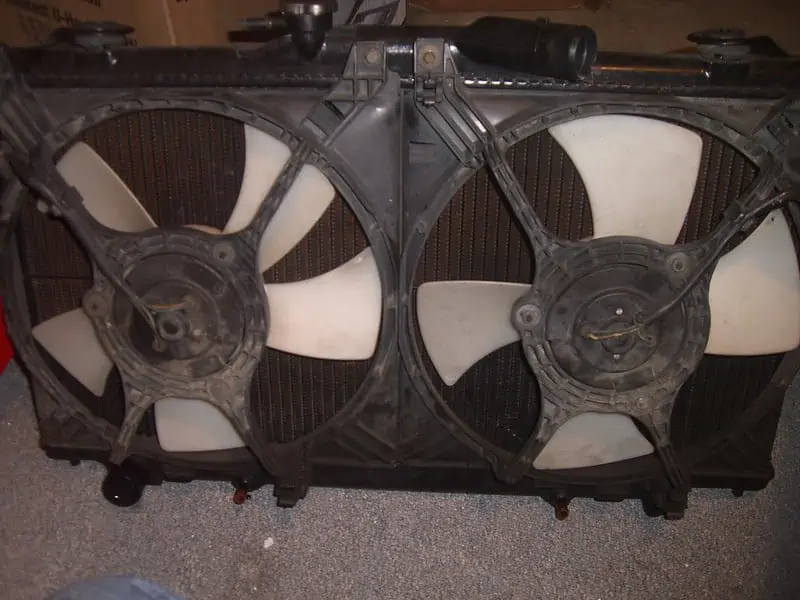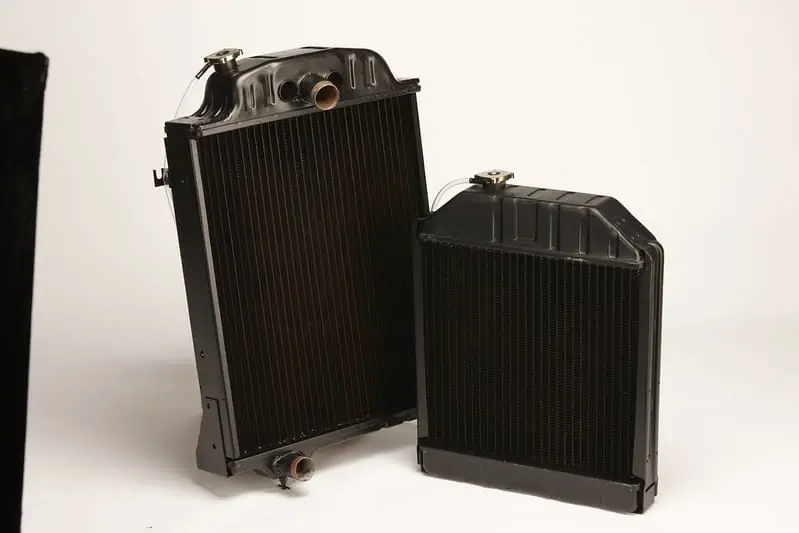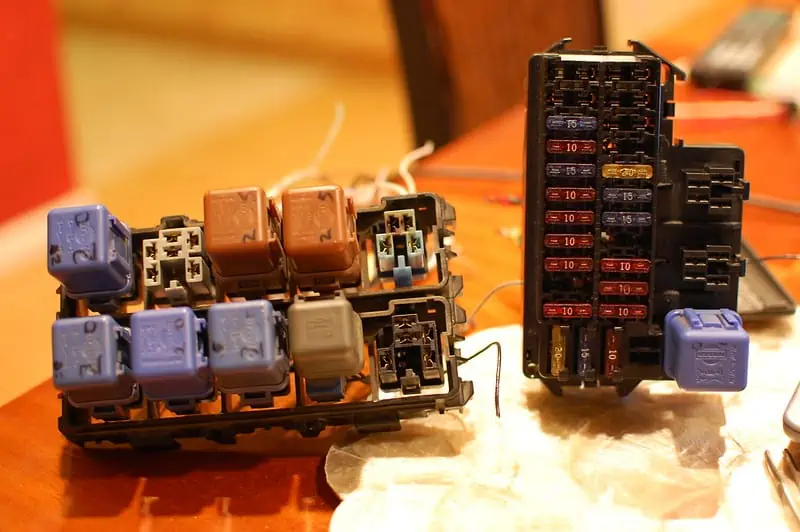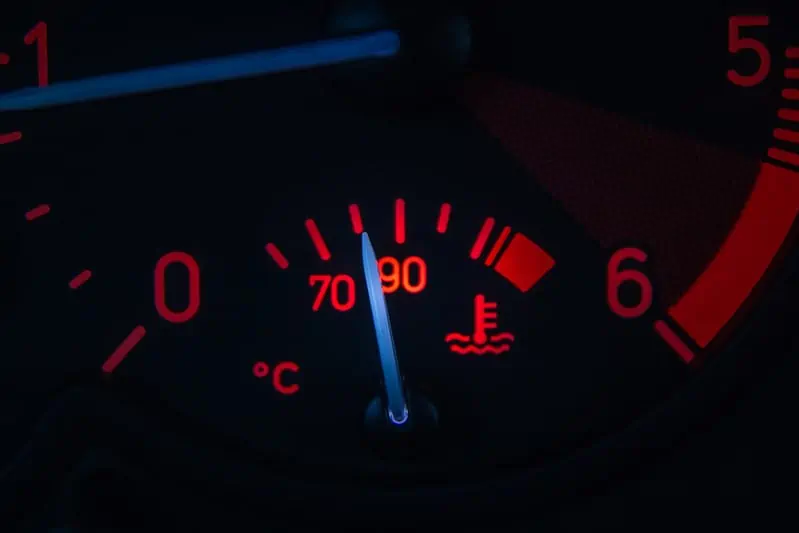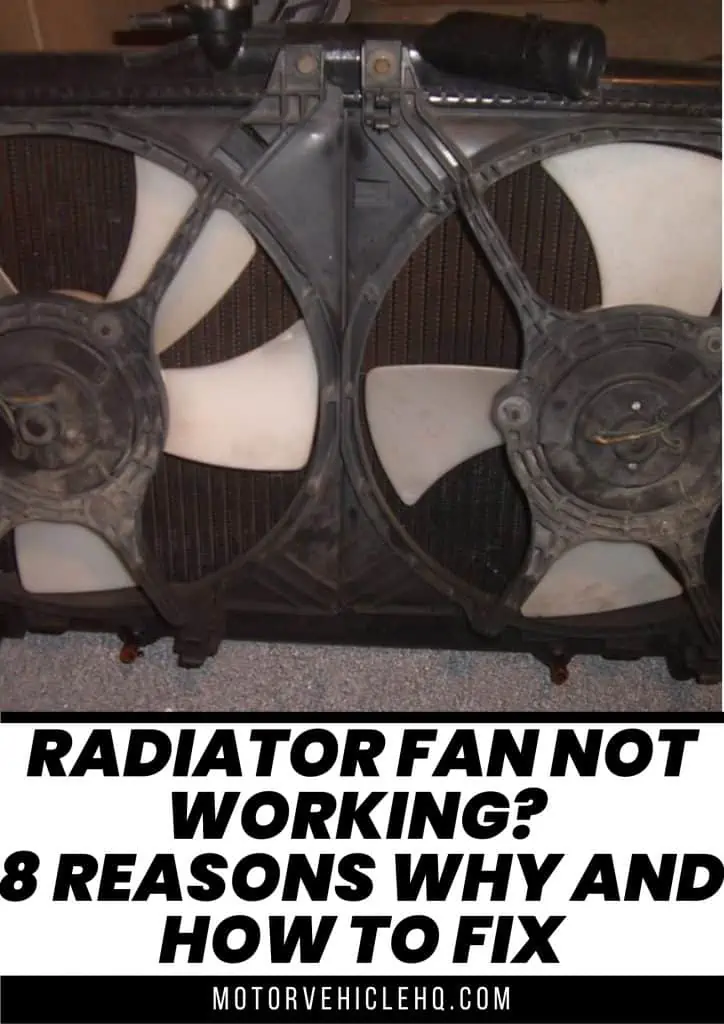One common engine problem peculiar with vehicles is overheating due to the radiator not cooling the engine properly. This can cause reduced performance, and even a fire.
A radiator is a central heating and cooling system component in a car that sits on the engine and helps to cool it. Radiators are usually located in the trunk or on the roof of a car.
Radiators are made of metal or plastic and have fins on the top that help to distribute the heat. When the temperature inside a car gets too high, the radiator fan starts to turn. The fan draws air from outside the vehicle via the radiator fins and pushes it back into the interior. This keeps the car cool. If the fan stops working, then heat cannot escape from the car, and the interior can get very hot very quickly. As a result, it is critical to understand the causes of radiator fan failure so that you can fix or replace it as needed.
Reasons why your radiator fan may not be working
Radiator fans by Garnet / CC BY-NC-ND 2.0
Here are 8 reasons why a radiator fan might not be working:
Broken Radiator Fan.
Radiator fans are equipped with electric motors and if the fan motor doesn’t turn on at all, then it’s likely that the motor is fried. To check if the motor is fried, unplug it from the fuse box and turn it over in your hands. If you feel any resistance when you turn it over, then you know the motor is fried and needs to be replaced. Also, you can connect a voltmeter to the fan motor and measure the voltage. If the voltage is too low, you know that the motor is fried and needs to be replaced.
To replace the fan motor, you’ll need to disconnect it from the radiator by unscrewing the bolts holding it in place and then removing the fan from the radiator. Once the fan is out, you can replace it with a new one. Before replacing it, make sure to measure the voltage and compare it with the original specification. Before you replace it, test the voltage and compare it to the original specifications. To do so, unplug the plug that links the motor to the relay in the fuse box and use a multimeter to measure the voltage. If the voltage is below the original specification, you’ll need to replace the motor.
Before you replace your fan motor, make sure that all of the wires are connected appropriately and that they are securely attached. Once you’re sure that you’ve done that, you can plug the fan back in.
Debris Blocking the Radiator Fins
Check the radiator for any dirt and dust that might have built up over time as this could impact its working condition. Remove any debris that you find and clean the radiator fin with hot soapy water or vacuum cleaner until clean. Once clean, reattach the fan and test it to ensure it is working.
Car Radiators by Abilene Machine / CC BY 2.0
You need to be very careful when cleaning the radiator as you do not want to damage any of the fins. You will want to wear rubber gloves and ensure there is enough ventilation around you when you are cleaning it.
Faulty Fan Controller Module
The fan module is a small electronic device located in the engine bay that turns on and off when certain temperature levels are reached. It controls the temperature and airflow into the engine. Damaged fan controller modules can cause the fan to not turn on at all, or to stop working when the car’s temperature gets too hot. In that case, you’ll need to replace the fan controller module.
To replace a fan controller module, you’ll need to detach it from the bracket located on top of the radiator. Then you can remove it and replace it with a new one. Before replacing it, make sure that your old one is completely disconnected. If you are installing a new fan controller module, make sure to install it correctly by connecting the wires to the right terminals on the fan controller module. For more information, consult the vehicle’s manual.
Fan Relay Failure
A radiator fan is usually powered by a relay because it consumes so much electricity. Sometimes, this relay might get defective, resulting in the radiator fan not turning on.
Testing a relay and carrying out replacement yourself is quite simple if you can locate the relay. A fan relay is usually located in the engine bay’s fuse box, but consult your service manual to identify its location.
If it turns out to be a 4 pin relay, remove the relay and connect pins 30 and 85 to 12 volts. Check for voltage on pin 87 by grounding pin 86.
Faulty fuse
If the fan doesn’t turn on at all, but the car’s temperature is still getting too high, it might mean that the fuse supplying power to the radiator fan has blown. In that case, you’ll need to change out the old fuse for a new one and start the car up again to see if the problem is fixed. To locate the fuse, open the fuse box located in your car’s engine compartment. The fuses are usually inside plastic containers or “fuse blocks” that can be easily removed using a screwdriver.
Fuse and Relay box removed from a vehicle by Crazyoctopus / CC BY-ND 2.0
Once you’ve found the fuse that’s causing the trouble, take it out and replace it with a new one. Re-check if the fan works properly. The fan fuse is marked with a number and usually has the letters “R” or “S” next to it.
To change the fuse, you’ll need to pull out the two clips on the back side of the fuse box using a flat-head screwdriver and pull it straight out to remove them. Once the fuse is out, you can replace it with a new one and reattach the clips.
Dead Wires
Sometimes wires can short out or simply stop working for no apparent reason. That can happen even to brand new radiators; in this case, you will need to replace the radiator to get it working again. To determine whether the wires are faulty, use an ohmmeter to test them; if any of them show zero, they’re dead and must be replaced.
To replace the wires, you’ll first need to disconnect the power from the radiator and then remove the screws that hold it in place. You can then pull the radiator out of the car, detach the wires from it, and replace them with new ones. Check if the heater turns on after you’ve replaced the wires. If it doesn’t, the problem might be with the wiring itself and you’ll need to replace the entire radiator.
Low Coolant Level
If the coolant level in the car is low, then the fan may not be able to turn on because it needs a lot of power to start up. That’s why it’s a good idea to ensure the coolant level is filled to the recommended mark and that there are no leaks in the coolant system. If this is the problem, simply top up the coolant and turn on the fan.
Defective temperature sensor
If the car’s temperature is always getting too high or if the fan doesn’t turn on at all when the temperature inside the vehicle reaches a certain point, it might be time to replace the temperature sensor. That’s because the temperature sensor may be faulty and not send accurate readings to the car’s computer. You can check the voltage coming out of the sensor with an ohmmeter to see if it’s putting out the correct voltage – if it’s less than 5V, then you should replace the sensor.
Temperature gauge on a car dashboard by Ivan Radic / CC BY 2.0
To replace the sensor, disconnect the wires that run to it on the underside of the dashboard of the car and then take the whole unit out of the dashboard compartment. You can then replace the sensor and reattach the wires. Switch on the ignition and regulate the temperature inside your car; if everything is operating properly, your fan should turn on automatically when the heat reaches a particular level.
How Do I Know my Radiator Fan is Faulty?
If you’re experiencing any of the following symptoms, it is likely your radiator fan is not working:
Overheating
If your car’s temperature is consistently climbing, it may be because the radiator fan isn’t working. The fan blows air over the radiator to help keep it cool. If the fan doesn’t work, the heat from the engine will cause the radiator to overheat and reach dangerous levels.
Car fire caused by overheated engine by Kai Brinker / CC BY-SA 2.0
Extreme heat can wreak havoc on your engine and even cause fire if left unchecked for too long.
Loud noises From the Hood of the Car
If your car’s engine is making a lot of noise, it may be because the fan isn’t working properly. Without a fan to push the air over the radiator, it will build up heat and eventually cause your car to start making loud noises. The fan is crucial for keeping your engine cool, so if it’s not working properly, your car will eventually overheat and break down.
Radiator Fan Replacement Cost
Radiator fan replacement varies from vehicle to vehicle depending on their design. Generally, it costs between $550 and $650 on average. In many situations, the radiator fan will cost between $400 and $450, with labor costing an additional $150 to $200.
However, as shown in the video above, you may change the radiator fan yourself and save money on labor if you know how to use basic automotive equipment and have some general knowledge.
FAQs
- Can I drive my car with a faulty radiator fan?
- No, you can’t drive your car with the fan broken. This is because if the fan is broken, no air will flow through the radiator to cool the engine – this can lead to overheating and damage.
- What should I do if my radiator starts leaking?
- If your radiator starts to leak coolant – which is usually a sign that the radiator is starting to fail – you should get it replaced immediately.
- How can I tell if my radiator is dirty?
- You can tell if your radiator is dirty by looking in at the open side of the coolant reservoir to see if the fluid inside has any sort of discoloration or sludge in it. This usually indicates a problem with the radiator, and you should ensure it is serviced as soon as possible.
- Can I drive my car if the radiator is clogged?
- If the radiator is clogged, it will not be able to circulate the fluid properly, and this can lead to overheating and other problems.
Conclusion
If your radiator fan isn’t working, there’s a good chance it could be causing some problems with your car. By checking to see if the fan is actually broken and fixing it, you can hopefully restore your car’s cooling system to normal function and prevent severe damage to the engine.
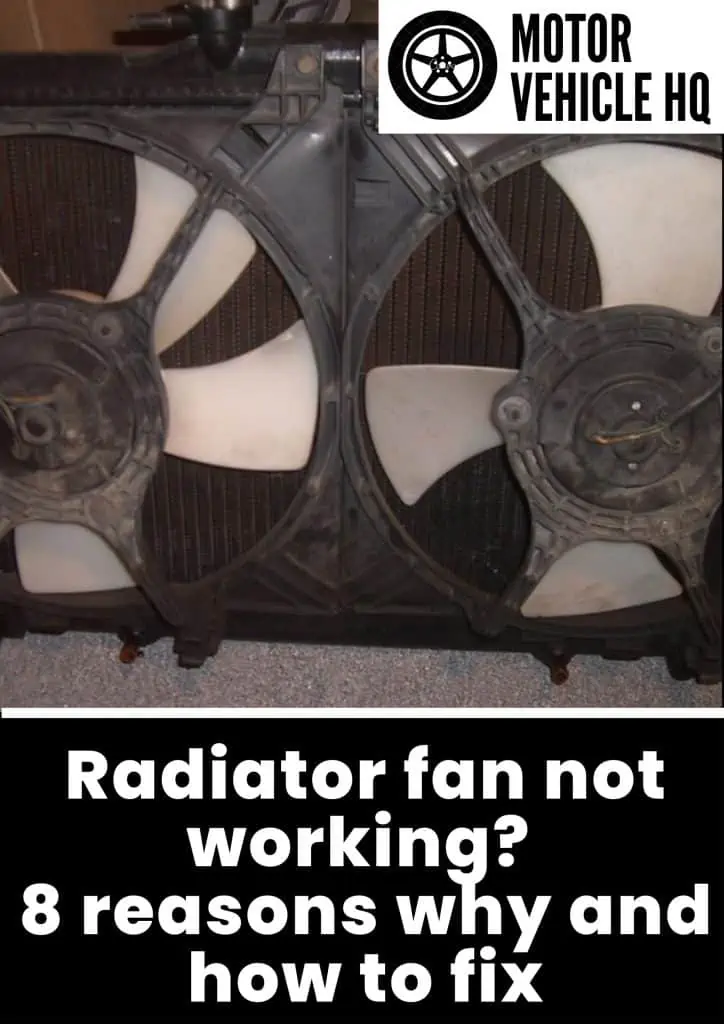

Jim Wicks is the founder of MotorVehicleHQ. With over two decades of experience in the automotive industry and a degree in Automotive Technology, Jim is a certified car expert who has worked in various roles ranging from a mechanic, car dealership manager, to a racing car driver. He has owned more than 20 cars over the past 15 years. Ask him about any vehicle you see on the road and he can tell you the make, model and year. He loves the aesthetics of all things cars, and keeps his vehicles in pristine condition.
In his free time, Jim enjoys getting his hands dirty under the hood of a classic car or taking long drives along the country roads. His favorite car? A 1967 Shelby GT500, a true classic that, according to Jim, “represents the pure essence of American muscle.”
